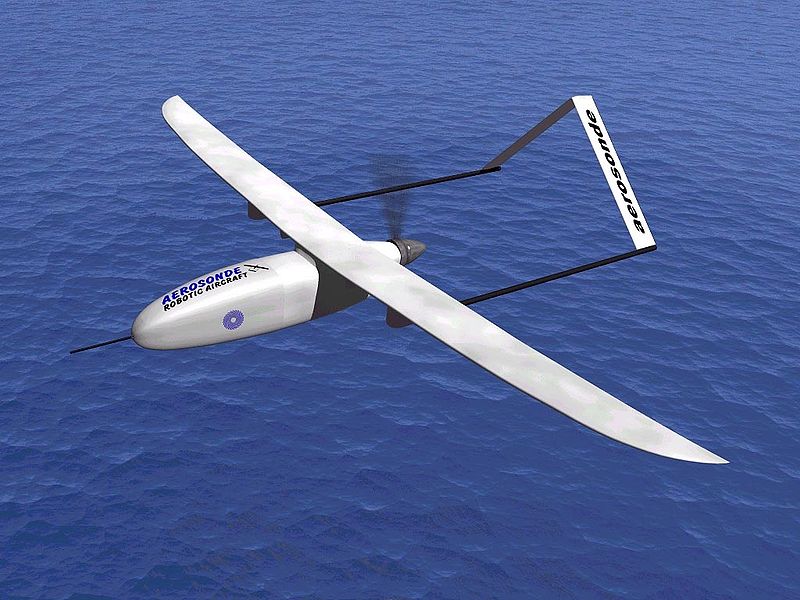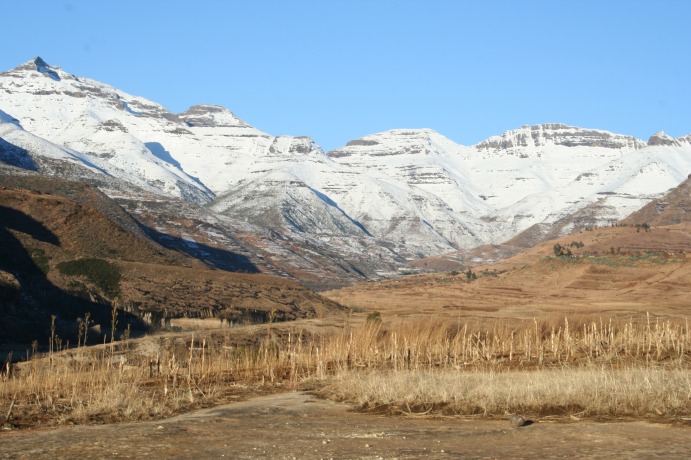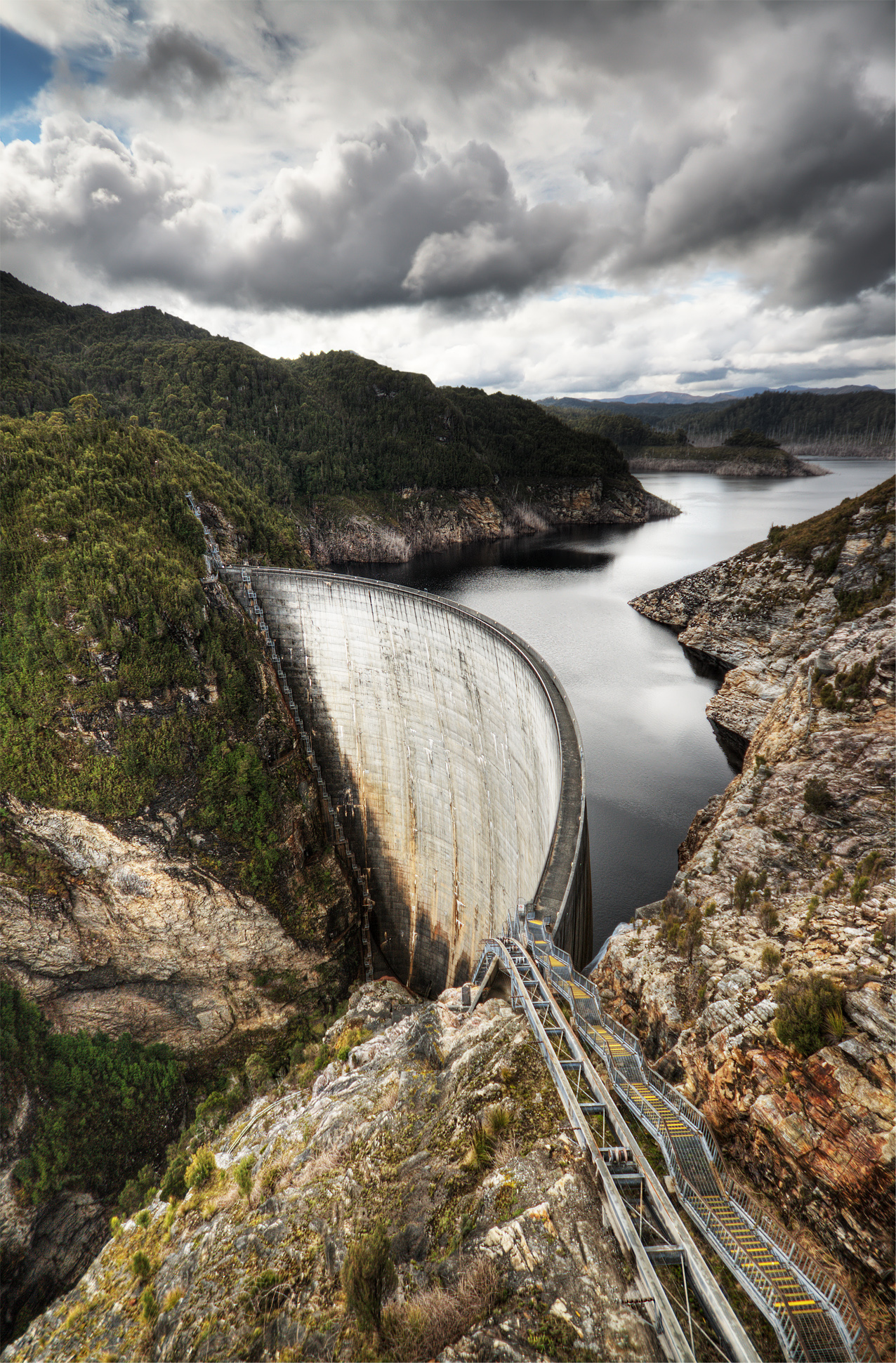Self-flying planes and Water Batteries
Interview with
Kelvin - Yeah that's right, it's a UAV which is an Unmanned Aerial Vehicle. The total weight of this thing is 30Kg, and the interesting thing is it's just recently done it's first autonomous flight. That means it's run totally on autopilot. Now South Africa, in fact, has many years of experience of designing these types of vehicles that have been driven by joystick, somebody sitting in a vehicle and flying the aircraft something like a great big video game. But this is the first time one has run entirely on autopilot. This one, by the way, is called E-Juba; E for electronic, as in email, and Juba meaning 'big bird'.
 Meera - So how does this actually work on autopilot?
Meera - So how does this actually work on autopilot?
Kelvin - Well you can actually take off with the conventional joystick way, fly it along and then have programmed into it certain GPS points or certain flying patterns, instruct it to go over to autopilot which it then does by computer. It can fly from one GPS point to another GPS point, or it can fly a particular pattern. What it means is that it can fly far away from the controller, it's only limited by the amount of fuel you're carrying, for example. Interestingly enough, the type of thing they have in mind is to o and fetch blood samples from clinics that are far out in rural areas. Another interesting thing about this is if they keep the total mass below 30Kg, then by law, this is classified as a model aircraft and that means it's much easier legally to manoeuvre the aircraft around and to land in certain places and so on. If it goes above 30Kg it falls into a different legal bracket and then there's more stringent requirements on it flying over built up areas or landing and so on. Now it's very easy for these people to launch, all they need is like a rubber band type of launcher.
Meera - So does it not need a runway as such?
Kelvin - It can use a runway, but where you don't have a runway a reasonably ordinary catapult type thing can be provided, so all has got to be done is it's got to be shot into the air in some degree and then it will power itself and off it glides. It's then programmed to return to a particular hospital with this blood sample.
Meera - What about landing?
 Kelvin - It lands on a runway if there's a runway there, but it can also land into something like a catch net. The aircraft can be aimed into the net and at the last moment you cut the motor and so the thing essentially falls into the net. So if it does land in some very rocky area or some busy area where there's no possibility of a runway, then that doesn't prohibit it from being launched again with something like a blood sample on board and heading back.
Kelvin - It lands on a runway if there's a runway there, but it can also land into something like a catch net. The aircraft can be aimed into the net and at the last moment you cut the motor and so the thing essentially falls into the net. So if it does land in some very rocky area or some busy area where there's no possibility of a runway, then that doesn't prohibit it from being launched again with something like a blood sample on board and heading back.
Meera - Now what would happen if something were to get in the way of it's flight path? Would it be able to deal with such a situation?
Kelvin - You obviously can build radars into it and so on to make it avoid such things, obviously every bit of fancy technology you add, adds to the weight. The ones that have been built in the past, South Africa's built some very big ones that have got all sorts of monitors on them, they can watch the ground in infra-red and with real cameras and, in fact, in real time the operator sits in the back of the truck and can actually watch the ground and so on and so forth. But those are a lot bigger than this 30Kg size. So now they're in the situation where it's flying autonomously and they've got to now make decisions as to exactly what do they put on it to keep it under 30Kg. The aeroplane itself is about 20Kg, and that allows for a 10Kg payload.
Meera - Okay, well hopefully more of these aircraft can be put in use to try and get blood samples from rural areas throughout Africa. Now also at the moment there seems to be what is essentially a large battery being built in the Drakensburg mountains in South Africa.
Kelvin - That's right. There's a range of mountains, the Drakensburg mountains which are the 'dragon mountains' that run between the province of KwaZulu Natal, which is the coastal province, and the more inland province of the Free State. There's a dam being built of the top of the mountain range on the Free State side and another one being built at the bottom on the KwaZulu Natal side. The difference in height between these two dams in 470m, in other words nearly half a kilometre, and they're about 6Km apart. So what happens is, the KwaZulu Natal province has got a lot of water, but up on the top side, the Free State side there's much less water, it's a much drier province.  So during the course of the off-peak electricity periods, they pump water up from the KwaZulu side up to the dam on the Free State side. And there it sits with this potential energy 470m higher now than it was before. Then when peak load times come like breakfast time and dinner time, they then let the water run back through the pumps, and the pumps go in reverse and turn into turbines and produce power of 1330MW, which is substantial. Now they don't let all the water run back because part of the purpose is to supply water up into the Free State. Some of the water stays up there and then gets reticulated off as agricultural supply and household water and so on. When there's a demand for electricity that might suddenly occur, say, outside peak hours, it's a reasonably simple thing to do to stop the whole system pumping and then run it back down hill again into generator mode.
So during the course of the off-peak electricity periods, they pump water up from the KwaZulu side up to the dam on the Free State side. And there it sits with this potential energy 470m higher now than it was before. Then when peak load times come like breakfast time and dinner time, they then let the water run back through the pumps, and the pumps go in reverse and turn into turbines and produce power of 1330MW, which is substantial. Now they don't let all the water run back because part of the purpose is to supply water up into the Free State. Some of the water stays up there and then gets reticulated off as agricultural supply and household water and so on. When there's a demand for electricity that might suddenly occur, say, outside peak hours, it's a reasonably simple thing to do to stop the whole system pumping and then run it back down hill again into generator mode.
Meera - When is this likely to be completed and actually in use?
Kelvin - The target for the first unit to come online is April of 2012.
Meera - You mentioned that it will hopefully generate about 1330MW of electricity, what kind of things could that provide power for?
Kelvin - A medium sized town uses about 150-200MW, so what it does is it adds the amount of a sizeable couple of towns into the grid when you need it.
Meera - So why was this idea developed?
Kelvin - Well, South Africa is running a bit tight on electricity at the moment, we actually made international news about a year ago when there were some rolling blackouts in the country. One of the problems that happens in every 24hour cycle is that there's a peak requirement at breakfast time and a peak requirement at dinner time. It's not a good idea to have a whole power station running only to supply an hour or so worth of peak at the beginning of the day and the end of the day. It's good to have something like this "water battery" that can be used only during a one or two hour period, and at the same time act as a water supply to a water-deprived province.










Comments
Add a comment